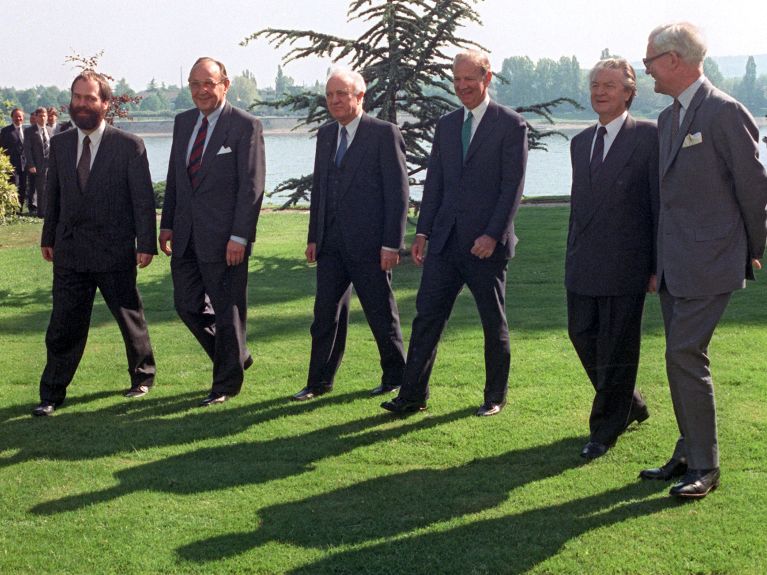Two plus Four Treaty
The fall of the Berlin Wall marked the beginning of a new era, but it was the Two plus Four Treaty that actually paved the way to German reunification.

After the fall of the Berlin Wall, the reunification of Germany was only made possible after the Soviet Union, the USA, France and Britain had reached an agreement. In the Two plus Four discussions the foreign ministers of the four victorious powers and their two German colleagues negotiated on the question of how the two German states should be brought together.
Finally, at a meeting in the Caucasus in July 1990, Federal Chancellor Helmut Kohl received agreement to German reunification from the Soviet head of state, Michail Gorbatchev. Prior to this, the USA and the European Economic Community, the forerunner of the European Union, had already welcomed reunification.
The foreign ministers finally signed the Two plus Four Treaty on 12 September 1990 in Moscow. It regulated the borders as well as the future status of Germany. Two weeks later, the victorious powers made an official statement renouncing their rights and responsibilities for the still occupied Germany. The Federal Government and the GDR government, which had been freely elected in March 1990, had already signed the Unification Treaty between the two states on 31 August 1990 which specified the domestic political framework. But the GDR was unable to formally join the Federal Republic before the Two plus Four Treaty had clarified the foreign political aspects.
The Two plus Four Treaty was then quickly ratified by united Germany and the three western powers. In contrast, Moscow took its time. After a lengthy and controversial debate in the Supreme Soviet, it also ratified the treaty on 4 March 1991. The treaty came into power on 15 March 1991 when the instruments of ratification were handed to Germany’s Federal Foreign Minister, Hans-Dietrich Genscher.
